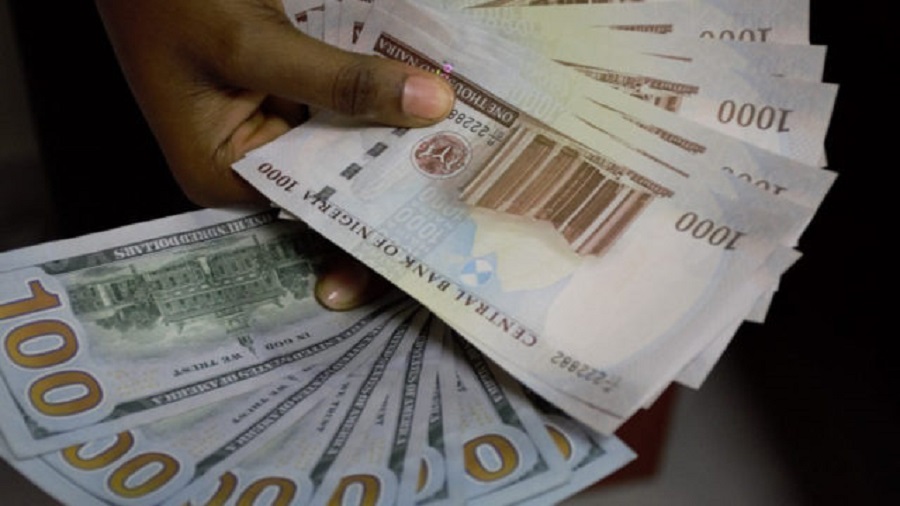
The exchange rate between the naira and the dollar depreciated closing at N394.17/$1 at the NAFEX (I&E Window) where forex is traded officially.
Forex turnover, however, dropped by about 42.2% as pressure on the foreign exchange market continues.
Naira fell against the U.S. dollar at the unofficial market on Tuesday, data posted on abokiFX.com, a website that collates parallel market rates in Lagos showed.
The data posted showed that the naira closed at N486.00 at the black market, which represents an N4.00 or 0.83 percent devaluation from N482.00 the rate it has been exchanging hands with the greenback since April 12.
The last time the local unit touched N486.00 was on March 31.
Slight depreciation at I&E too.
In a similar pattern, the naira weakened slightly against the U.S. dollar at the I&E window of the foreign exchange market on Tuesday, as foreign exchange supply soar significantly.
Data posted on the FMDQ Security Exchange where forex is officially traded showed that the domestic unit closed at N410.67 at the trading session of the NAFEX window.

Tuesday’s performance represents 0.08 percent devaluation from N410.33 it traded in the previous session on Monday.
The last time the currency hovered around N410.00 and above was on April 15.
It touched an intraday high of N381.00 and a low of N437.41 before closing at N410.67 on Tuesday.
This occurred as forex turnover skyrocketed by 42.72per cent, with $99.49 million recorded as against the $69.71 million posted in the previous session on Tuesday.
By implication, the spread between the unofficial market and the I&E window exchange rate is pegged at N75.33, which translates to a gap of 15.50 percent.

Oil price steady rise
Brent crude oil price is at about $55.34 per barrel as of Monday morning, as it moves towards the $60 mark, a strong sign that global demand could sustain price increases in 2021.
- This appears as a boost to Nigeria as the country’s crude oil price benchmark for 2020 was $40 while it projected an oil production output of 1.8 million barrels per day.
- Nigeria has a production capacity of 2.5 million barrels per day but is subject to OPEC’s crude oil production cuts, which are expected to help sustain higher oil prices.
- The higher oil prices and steady production output have positively impacted Nigeria’s external reserves, rising sharply to $36.304 million according to central bank data dated January 14, 2020.
- This is the highest level since July 2020 and a sign that higher oil prices and steady output levels may be contributing significantly to Nigeria’s foreign exchange position.
- Nigeria rising external reserves
- The external reserve has risen to $36.508 billion as of January 21, 2021.
- 1st Afrika.com had earlier reported that the government may have taken receipt of the $1-1.5 billion World Bank loan.
- The external reserves have increased by $1.135 billion since December 31, 2020, when it closed the year at $35.3 billion.
- Nigeria also needs the external reserves to hit $40 billion if it is to adequately meet some of the pent-up demand that has piled up since 2020 when oil prices crashed and the pandemic caused major economic lockdowns.

